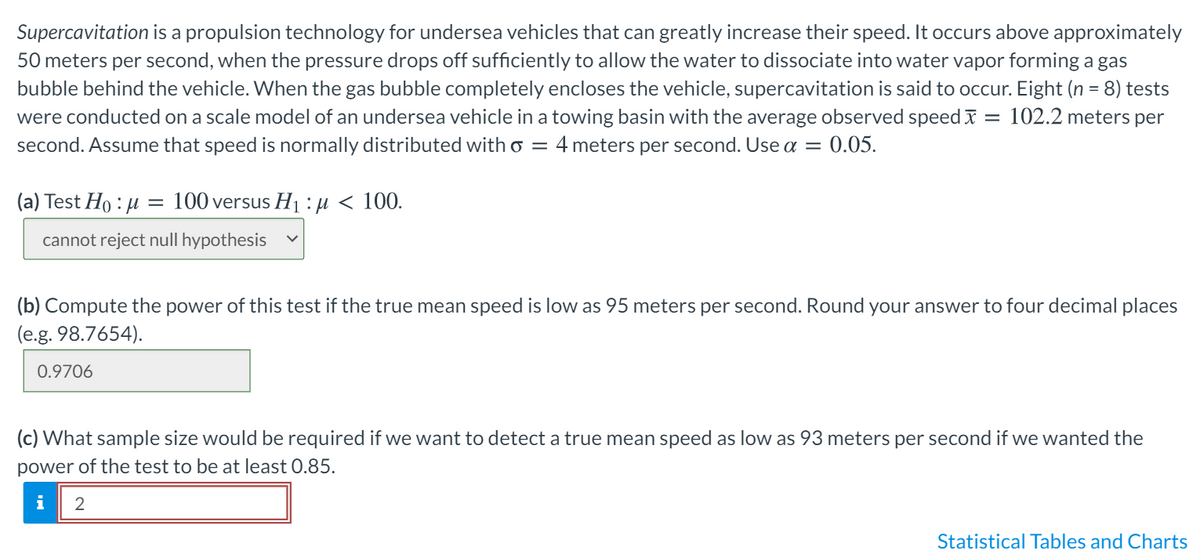Supercavitation is a propulsion technology for undersea vehicles that can greatly increase their speed. It occurs above approximately 50 meters per second, when the pressure drops off sufficiently to allow the water to dissociate into water vapor forming a gas bubble behind the vehicle. When the gas bubble completely encloses the vehicle, supercavitation is said to occur. Eight (n = 8) tests were conducted on a scale model of an undersea vehicle in a towing basin with the average observed speed I = 102.2 meters per second. Assume that speed is normally distributed with o = 4 meters per second. Use a = 0.05. (a) Test Ho : µ = 100 versus H1 :µ < 100. cannot reject null hypothesis (b) Compute the power of this test if the true mean speed is low as 95 meters per second. Round your answer to four decimal places Ce.g. 98.7654). 0.9706 (c) What sample size would be required if we want to detect a true mean speed as low as 93 meters per second if we wanted the power of the test to be at least 0.85. i 2 Statistioal Tables and Charts
Minimization
In mathematics, traditional optimization problems are typically expressed in terms of minimization. When we talk about minimizing or maximizing a function, we refer to the maximum and minimum possible values of that function. This can be expressed in terms of global or local range. The definition of minimization in the thesaurus is the process of reducing something to a small amount, value, or position. Minimization (noun) is an instance of belittling or disparagement.
Maxima and Minima
The extreme points of a function are the maximum and the minimum points of the function. A maximum is attained when the function takes the maximum value and a minimum is attained when the function takes the minimum value.
Derivatives
A derivative means a change. Geometrically it can be represented as a line with some steepness. Imagine climbing a mountain which is very steep and 500 meters high. Is it easier to climb? Definitely not! Suppose walking on the road for 500 meters. Which one would be easier? Walking on the road would be much easier than climbing a mountain.
Concavity
In calculus, concavity is a descriptor of mathematics that tells about the shape of the graph. It is the parameter that helps to estimate the maximum and minimum value of any of the functions and the concave nature using the graphical method. We use the first derivative test and second derivative test to understand the concave behavior of the function.

Trending now
This is a popular solution!
Step by step
Solved in 2 steps








